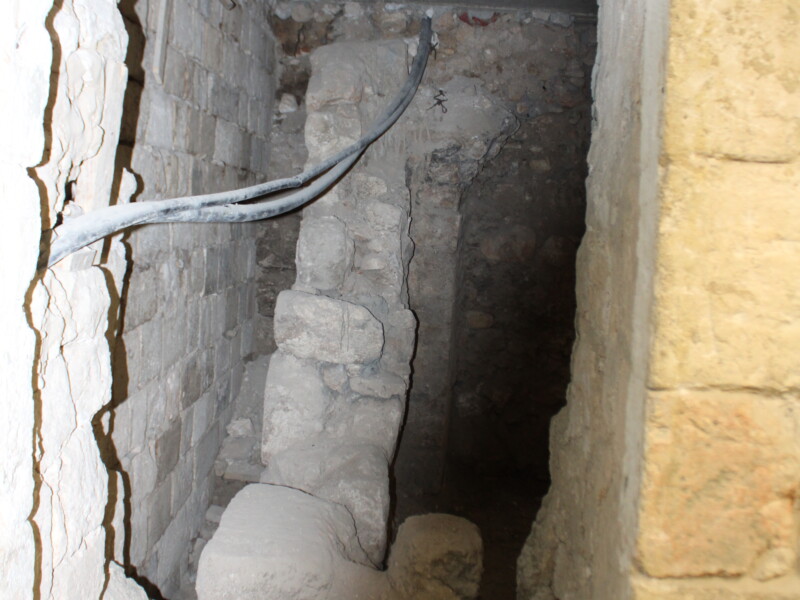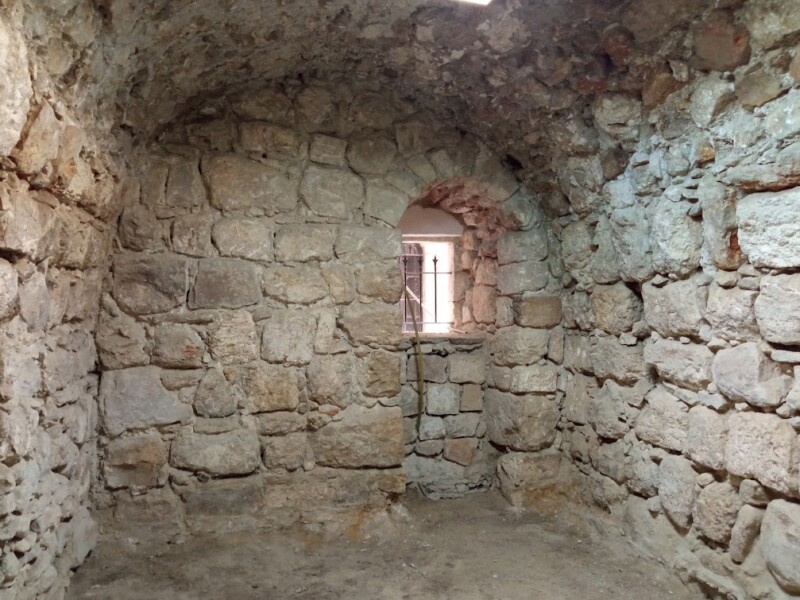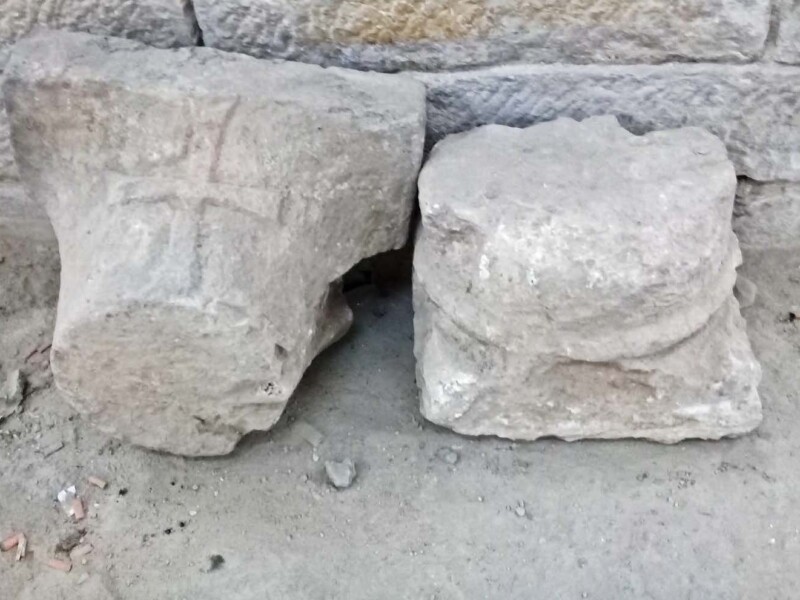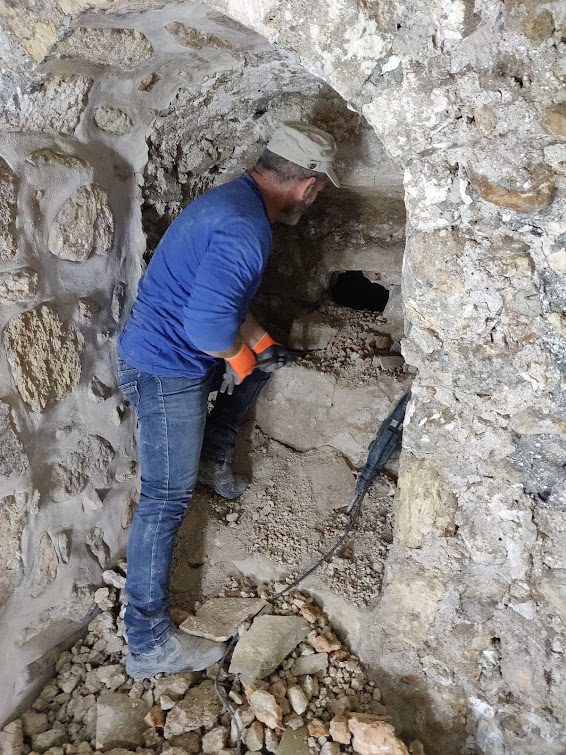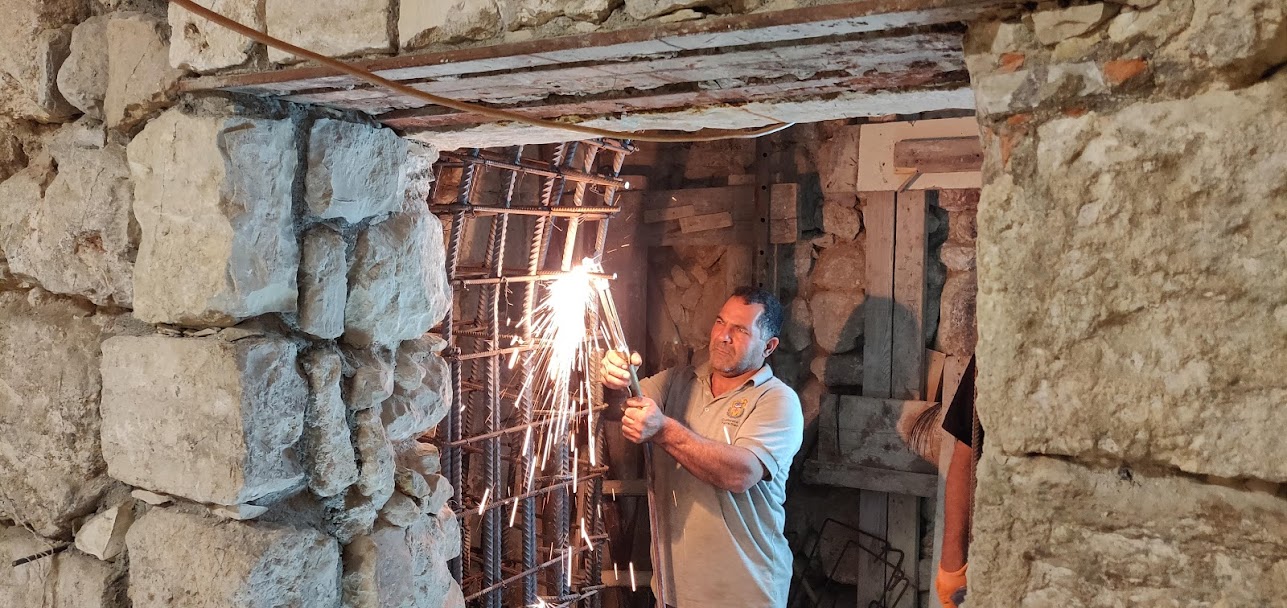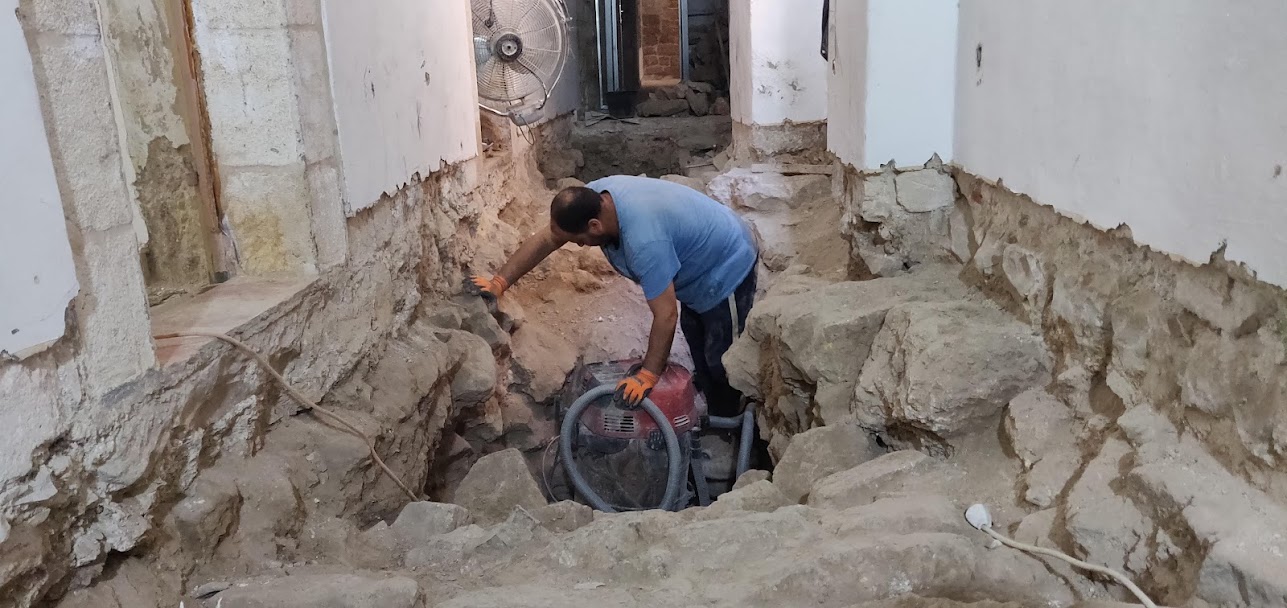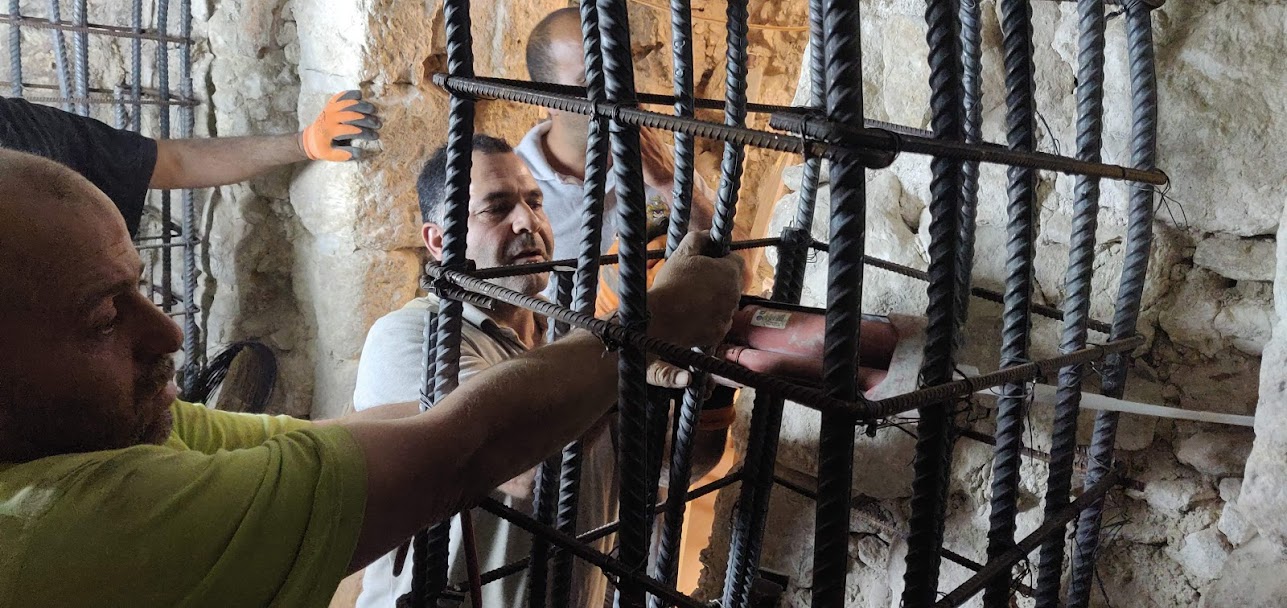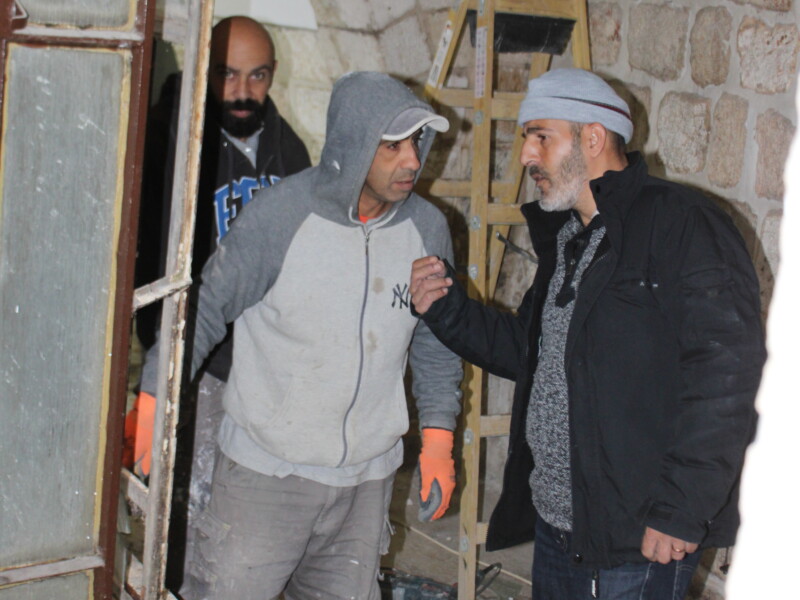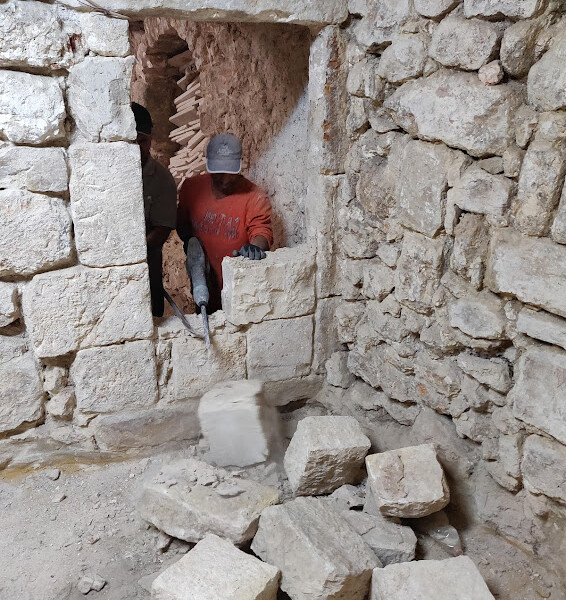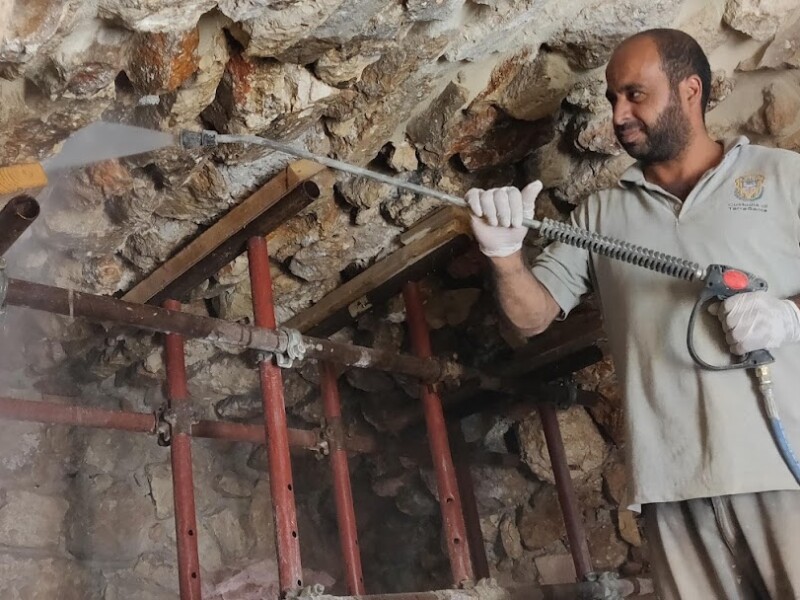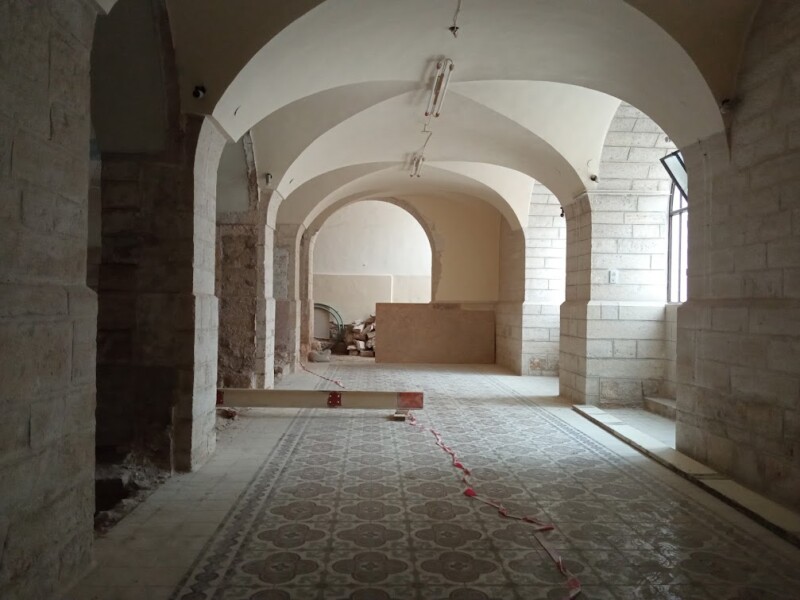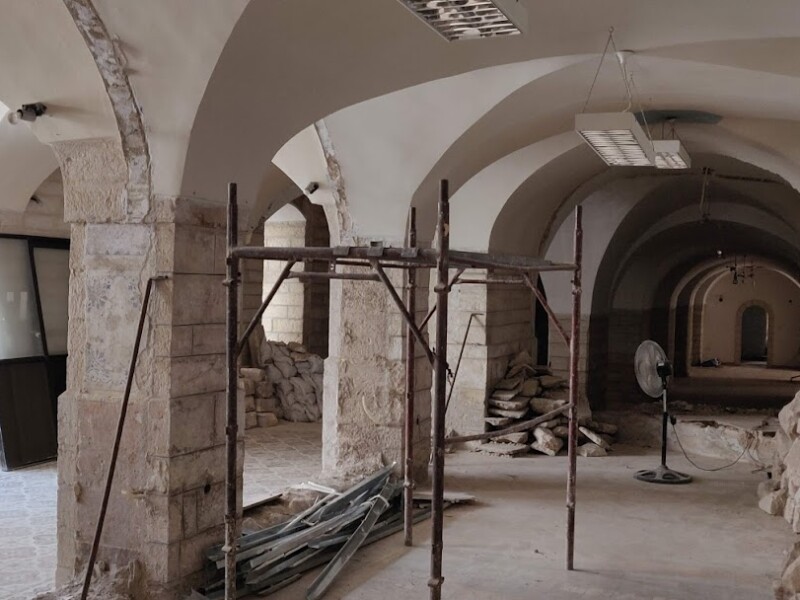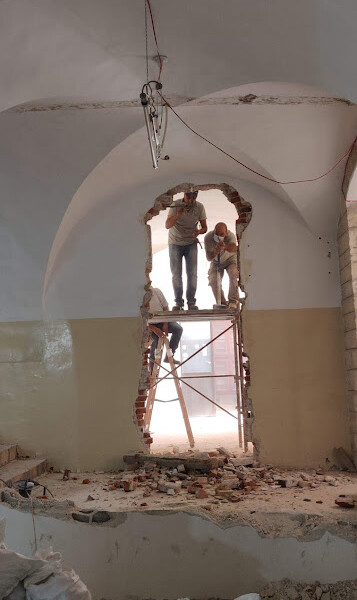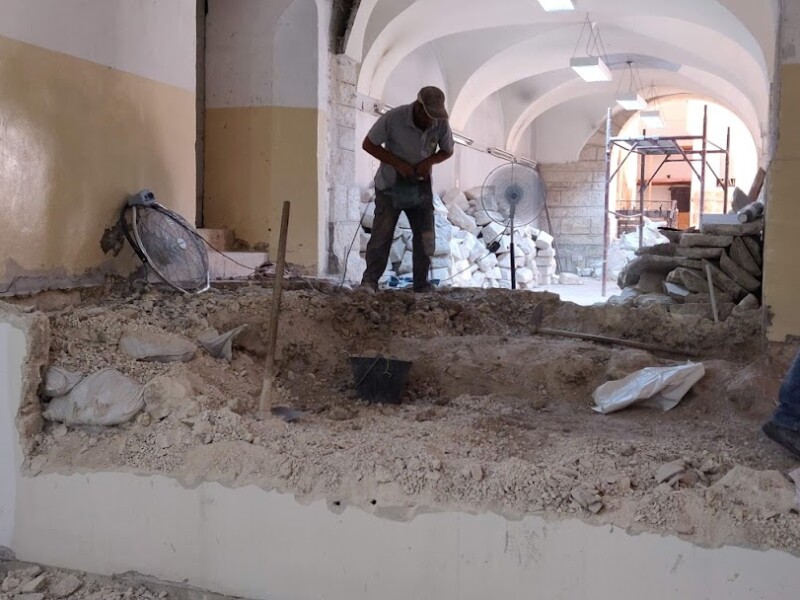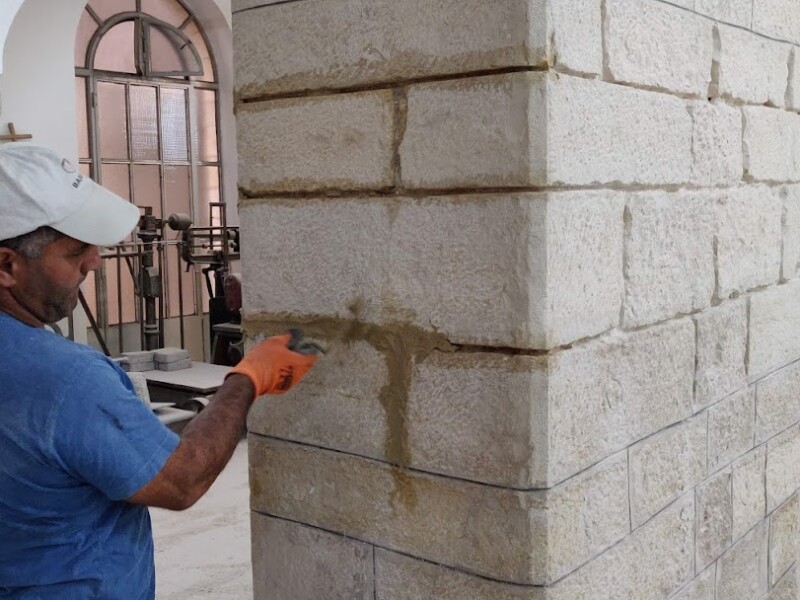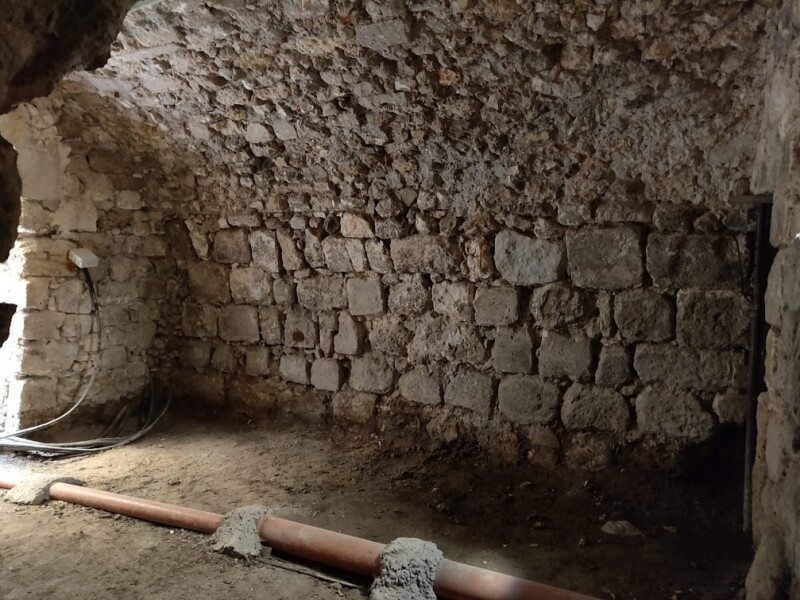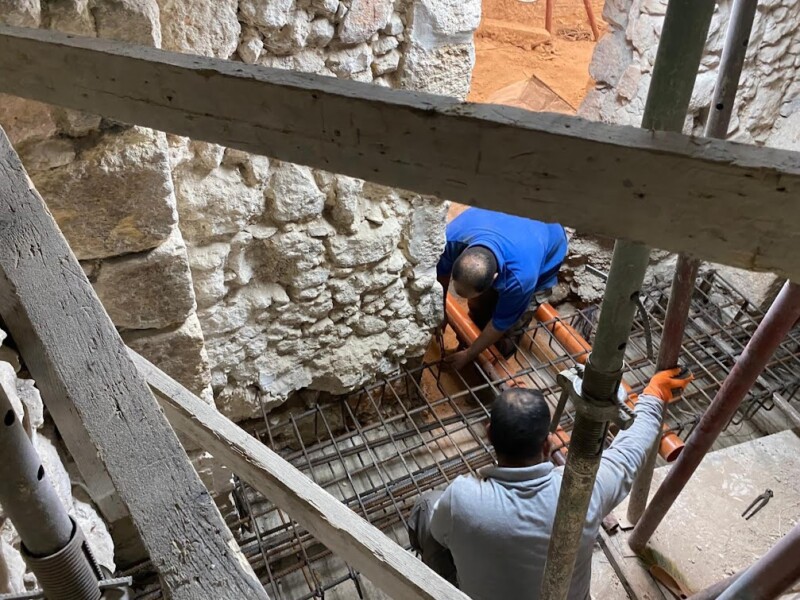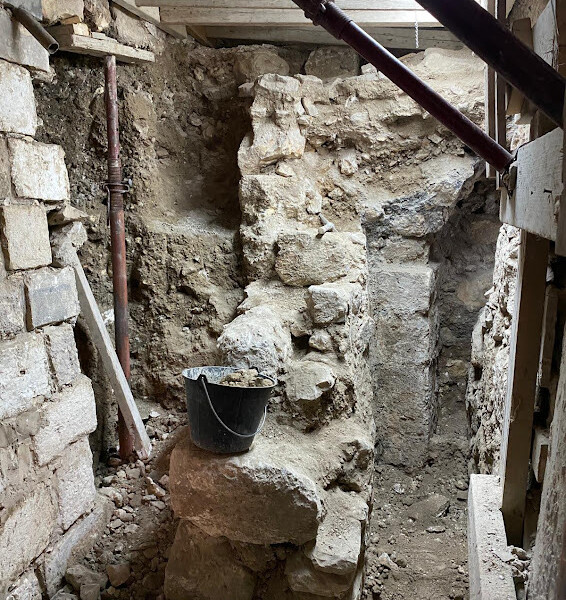“We will be part of this museum”: a museum built hand in hand with the Palestinians
In the middle of the afternoon in the middle of the week, the studious atmosphere can be felt by anyone entering the Technical Department of the Custody of the Holy Land. Sitting at a desk, two architects are exchanging views in Italian on a highly technical question. The foreman drops in to pick up his tape measure and his plans, a few words in Arabic and in English merge for a detail given and the joke going with it. The international team is made up of Italian, French and Palestinian engineers and architects, a Palestinian administrator and foreman, as well as about fifteen workers, from the Old City of Jerusalem or the Palestinian Territories. All of them are working together on the different sites of the Custody, including that of the Terra Sancta Museum (TSM).
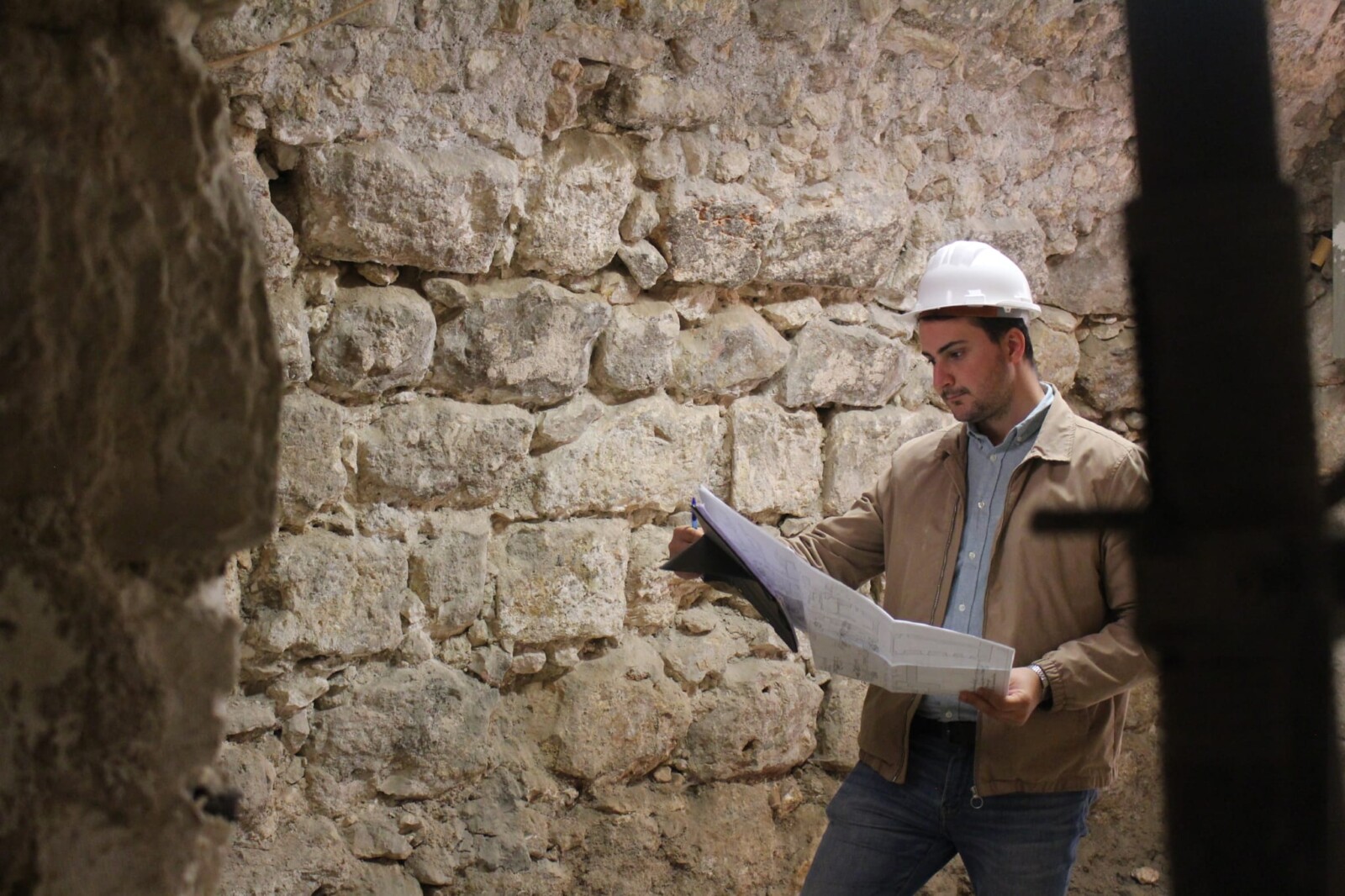
“According to the vocation of the Custody, we have an international staff,” explains Vincenzo Zuppardo, the architect of the historical section of the museum, “so the language used is English, even though most of us speak Italian. Being of different nationalities is not a problem, on the contrary, we contribute a lot in terms of experience, despite our differences of language and culture. We are lucky to have very good communication within the team.”
Communication is essential, considering the complexity of the project which requires the team to adapt all the time. The construction of the convent spread from the 5th century to the present-day, bringing improant changes both in the structures of the buildings but also in the organization of the spaces. The work for the TSM has allowed identifying several phases before the church was built in the 19th century (Byzantine capital or Crusader masonry for example).
As a consequence, the team comes face to face with structures that have been made particularly fragile by the subsequent additions. “In 22 years of working in the Old City, I have seen many complicated sites,” says Issa Shaheen, the Palestinian foreman with the Custody since 2009. The museum’s site really worried me. All this weight [that of St Saviour’s church on the upper floor, Ed.’s note] which rested on these very unstable walls, was not very reassuring. But when we began to work, we saw that it was possible to consolidate the walls and to stabilize the structure of the building while following the architectural plan of the TSM, and so we have gradually advanced.”
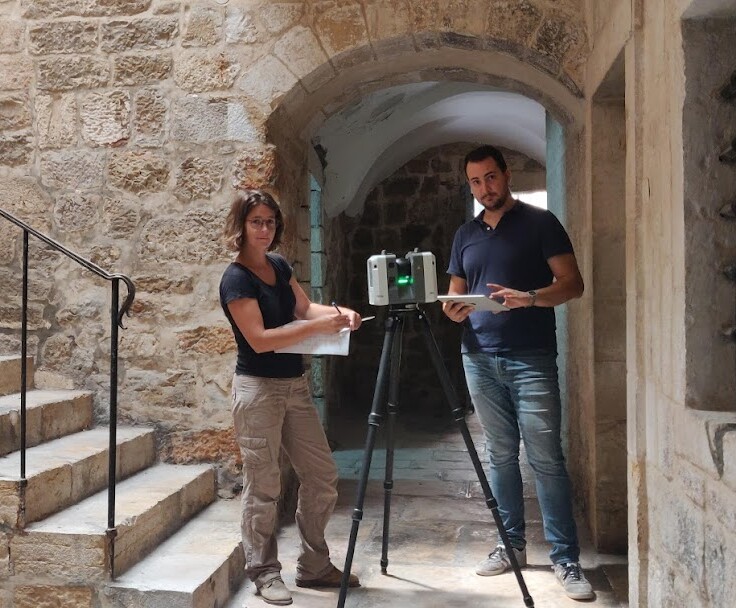
In this particular context, it is necessary to adapt all the time and it is fundamental to be able to have the support of the experience of the Palestinian workers. Lorraine Abu Azizeh, an architect for more than 15 years on restoration sites in France and the Middle East, describes the wealth of local expertise : “It’s what I appreciate the most on heritage sites. We work with craftsmen who are real specialists. The workers of the Custody know this place by heart, but also the local techniques, in particular stone work or plastering. The methodologies that we think of implementing at the start of a project can be reviewed and modified following discussions with the teams that work on the site every day.”
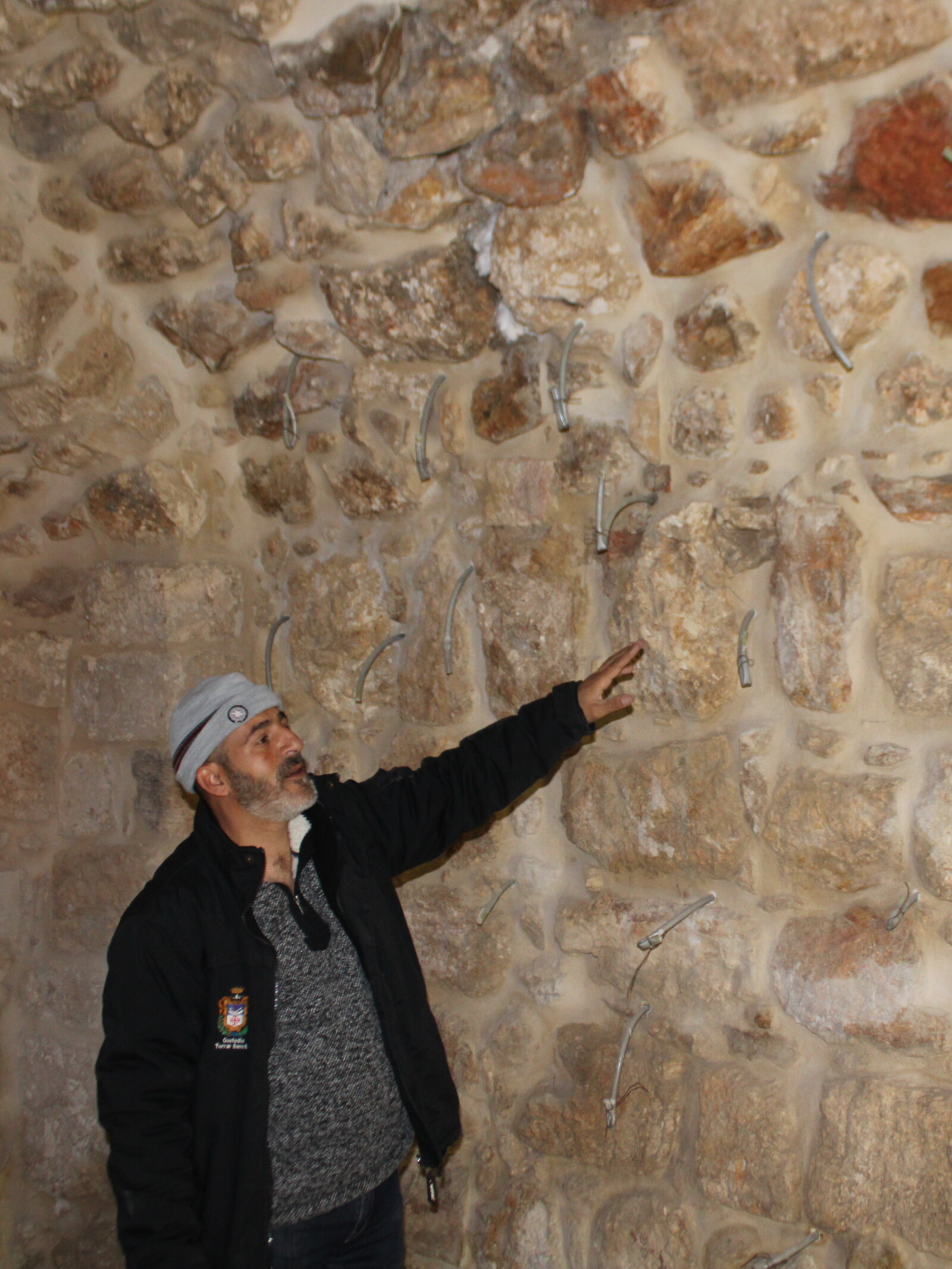
Issa agrees : “We are continually confronted by new surprises with the old buildings. I always begin by asking: why did they do that? For what reasons? I find the answers thanks to my experience gained in the past 20 years here in the Old City of Jerusalem and so I can restore the buildings with knowledge of this very specific local context.”
“What is also fascinating, and that is being increasingly lost in Europe,” completes Vincenzo Zuppardo, “is the knowledge of ancient techniques that the workers of the Custody have, thanks to a transmission from one generation to the next. Their knowledge of stereotomy [1] is fundamental in all the restoration projects of the Custody and particularly in the TSM project.”
This sharing of skills is beneficial for everybody and allows exchanging knowledge, in particular techniques, which make the project of the museum fascinating. For example, we can mention the use of modular plots which are put in place under the floor coverings, to stop and limit to a maximum the problems of humidity which are frequent in the Old City of Jerusalem. This technique is widely used in Italy, but not at all in Palestine (nor in France, for example) but it allows assuring the natural ventilation of the soil and thus foster a better conservation of the objects that will be displayed in the rooms of the museum.
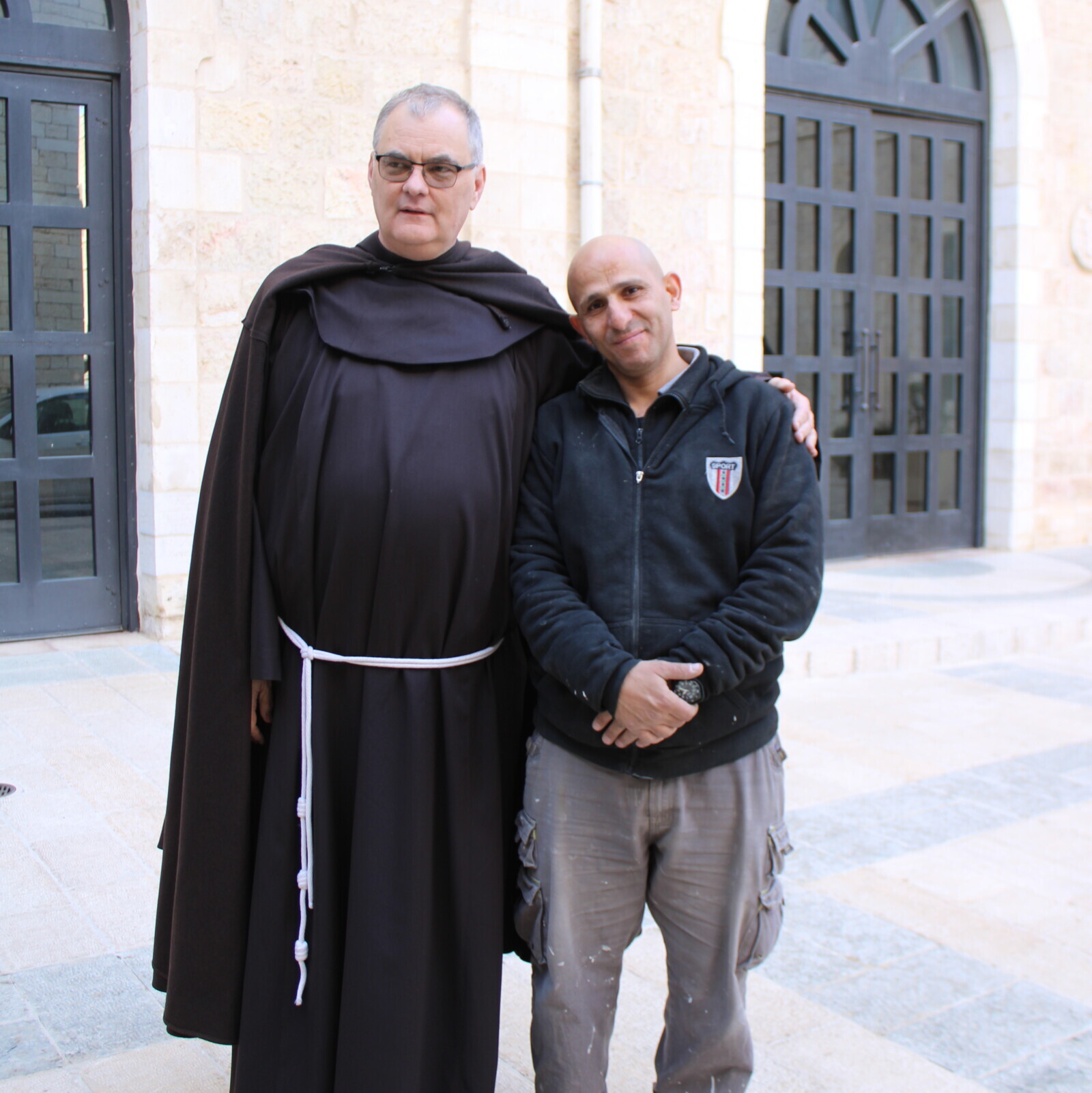
If the Technical Department of the Custody works on the structural part of the project, the team is no less curious about the collections, Throughout the visitor’s route of the museum, works on the history of the Old City will be presented, as well as an important Palestinian cultural heritage; this is a major detail which did not leave the Jerusalem workers indifferent. Let’s meet Saliba Sisserian, 44 years old, and who has worked for the Custody since 2011. When we ask him whether he knows the contents of the museum, he answers, laughing : « No, Friar Stéphane is keeping them secret! But I see on the social media the objects of the collections, I know that there will be Palestinian works of art on display and I am obviously very proud of that: we are part of this museum.”
For Issa, displaying these works which speak of the Christians of the Holy Land is a capital stake: “The difficulties of living on this land mean that I work with all my heart. Because we are here, the Palestinian Christians. We are the salt of this Land. If you take away the salt, if you take us away from this Land, it will no longer have any flavour. We are the only ones here and we continue to fight to stay here.”
When the first stone was laid in 2015, Mgr Pizzaballa, then the Custos, had underlined the universal vocation of the city of Jerusalem, and the need to preserve its Christian character as one of the constitutive elements of its particular configuration. The historical section of the Terra Sancta Museum is conceived as a “living” cultural centre, the objective of which will be to raise the awareness of everyone about the links between the city and Christian traditions, both local and international, from the first centuries to the present day.”
[1] In architecture, stereotomy is the art of cutting stones to assemble them to form structures such as vaults, domes etc..
(Translated from french by Joan Rundo)

